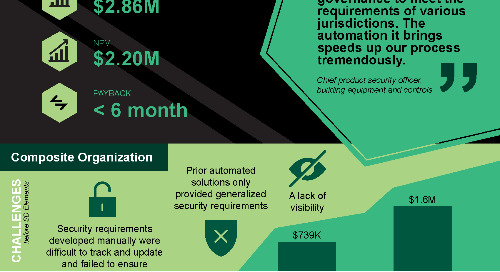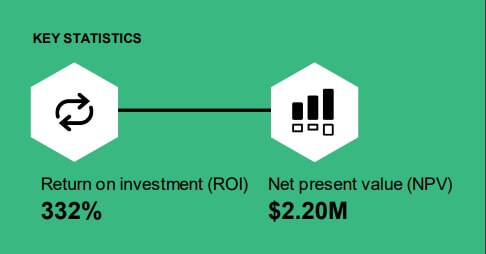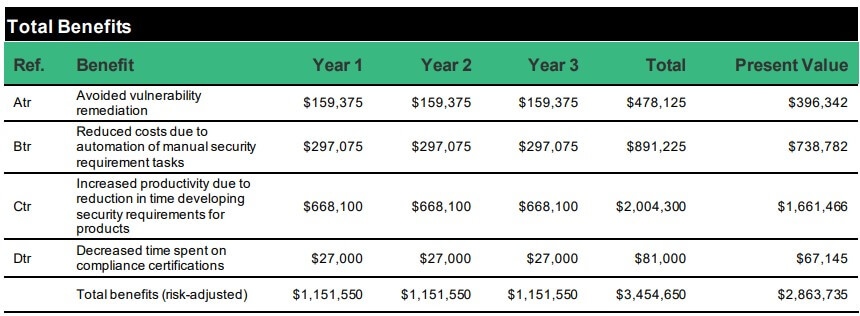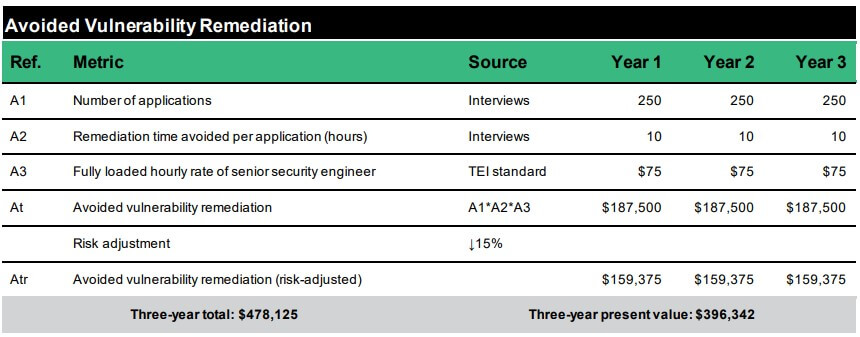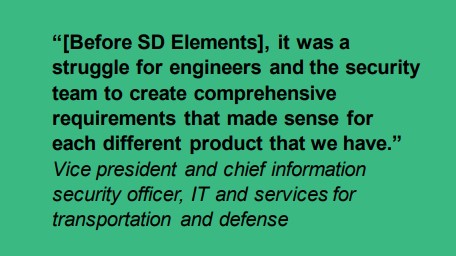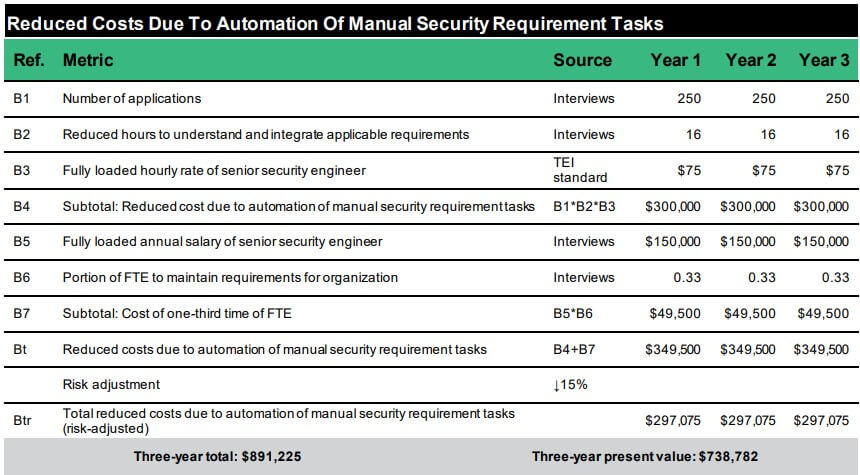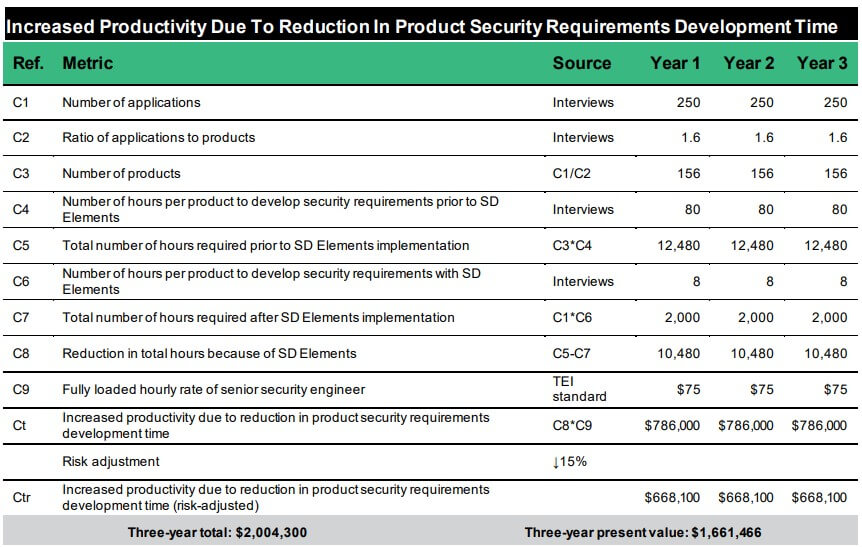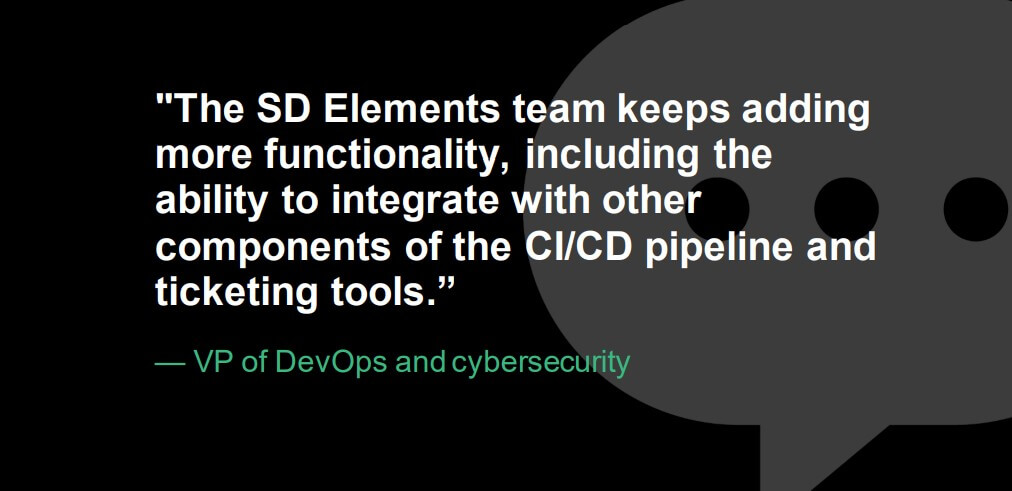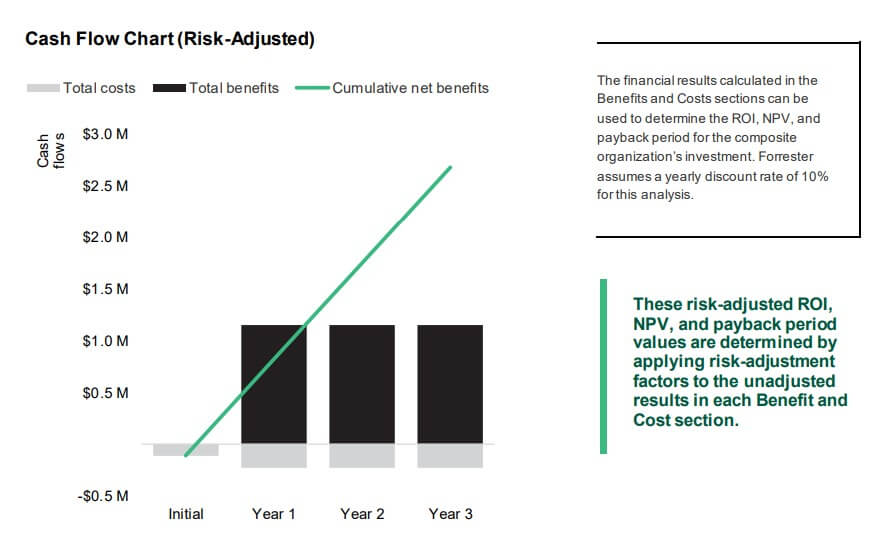Executive Summary
Development, security, and operations (DevSecOps) helps DevOps and agile teams increase speed to-market by ensuring that fast and frequent deployments to production are secure by design. Teams need to shift security left in the software development cycle and identify compliance and regulatory standards, security requirements, and company policies that apply to applications before they are written. Automation saves time and money, enabling organizations to deliver secure code customers can rely on and trust.
Security Compass is a leading provider of secure software development and developer-centric threat modeling solutions that enable organizations to build secure software faster. SD Elements helps software development teams continuously model software threats at scale and then write code that significantly reduces cyber risk and remediation costs. SD Elements integrates security from the beginning of the development process and enables consistent, scalable, secure coding and threat modeling across an entire software portfolio.
Security Compass commissioned Forrester Consulting to conduct a Total Economic Impact™ (TEI) study and examine the potential return on investment (ROI) enterprises will realize by deploying SD Elements. The purpose of this study is to provide readers with a framework to evaluate the potential financial impact of SD Elements on their organizations.
To better understand the benefits, costs, and risks associated with this investment, Forrester interviewed four decision-makers with direct experience using SD Elements. For the purposes of this study, Forrester aggregated the interviewees’ experiences and combined the results into a single composite organization.
Prior to using SD Elements, interviewees noted how their organizations used archaic, manually entered spreadsheets to create, track, and update security requirements, which often overlooked critical requirements, limited security control status visibility, and, most frustratingly, made it necessary to rewrite code. They lacked an automated solution that integrated security into the beginning of the development process. After the investment in SD Elements, the interviewees experienced a reduction in critical vulnerabilities and improved developer productivity.
KEY FINDINGS
Quantified benefits. Risk-adjusted present value (PV) quantified benefits include:
- Avoided vulnerability remediation worth $396,000 over three years. SD Elements allowed interviewees’ organizations to avoid material time in remediating application vulnerabilities. This included the time to investigate and validate vulnerabilities and the actual remediation of vulnerabilities, including testing fixes and reviewing fixes with development leads and security architects.
- Reduced costs due to automation of manual security requirement tasks, worth $739,000 over three years. Before implementing SD Elements, security architects had to understand requirements, utilize manual solutions such as spreadsheets, and provide training for security champions. For in-flight applications, security organizations had to review with the development teams where policies impacted their workflow, among other time-consuming steps.
- Increased productivity due to reduced product security requirements development time, worth $1.7 million over three years. Interviewees noted their organizations’ productivity increased significantly because of the solution, decreasing the time to develop security requirements for products by 90%. Prior to the implementation of SD Elements, multiple meetings and discussions were required to understand which requirements were applicable to a new product.
- Decreased time spent on compliance certifications, worth $67,000 over three years. Interviewees reported SD Elements decreased the time required to generate reports for auditing agencies. With the solution, it was easy to dive into the details and see what requirements were implemented. SD Elements enabled decision-makers to understand their application portfolio, including which products should be prioritized for certification in the near term and the future.
Unquantified benefits. Benefits that are not quantified for this study include:
- Increased ability to drive customers’ speed to market. Although the study did not capture quantified benefits related to speed-to-market, interviewees noted that SD Elements played a large role in their organizations, increasing their ability to accelerate the secure development of their applications and solutions to meet market requirements.
- Improved development team capabilities to focus on core responsibilities. SD Elements enabled developers to utilize the solution’s training library, allowing them to focus on value-added and critical priority tasks and quickly learn about specific and relevant security requirements.
- Enhanced capability to prioritize and delegate tasks based on skill level and complexity. Interviewees touted SD Elements as a platform that catalyzed their organizations’ ability to prioritize and distribute workflow activities as a result of the platform’s resource administrative capabilities.
Costs. Risk-adjusted PV costs include:
- Annual software license and support. After an initial cost of $110,000, Security Compass charged annual software license and support fees of $222,000 for Years 1 through 3. This cost was valued using data the interviewees and Security Compass provided.
The decision-maker interviews and financial analysis found that a composite organization experiences benefits of $2.86 million over three years versus costs of $663,000, adding up to a net present value (NPV) of $2.20 million and an ROI of 332%.
“SD Elements allows us to scale our security governance to meet the requirements of various jurisdictions. The automation it brings speeds up our process tremendously.”— Chief product security officer, building equipment and controls.
TEI FRAMEWORK AND METHODOLOGY
From the information provided in the interviews, Forrester constructed a Total Economic Impact™ framework for those organizations considering an investment in SD Elements.
The objective of the framework is to identify the cost, benefit, flexibility, and risk factors that affect the investment decision. Forrester took a multistep approach to evaluate the impact that SD Elements can have on an organization.
DISCLOSURES
Readers should be aware of the following: This study is commissioned by Security Compass and delivered by Forrester Consulting. It is not meant to be used as a competitive analysis.
Forrester makes no assumptions as to the potential ROI that other organizations will receive. Forrester strongly advises that readers use their own estimates within the framework provided in the study to determine the appropriateness of an investment in SD Elements.
Security Compass reviewed and provided feedback to Forrester, but Forrester maintains editorial control over the study and its findings and does not accept changes to the study that contradict Forrester’s findings or obscure the meaning of the study.
Security Compass provided the customer names for the interviews but did not participate in the interviews.
DUE DILIGENCE
Interviewed Security Compass stakeholders and Forrester analysts to gather data relative to SD Elements.
DECISION-MAKER INTERVIEWS
Interviewed four decision-makers at organizations using SD Elements to obtain data with respect to costs, benefits, and risks.
COMPOSITE ORGANIZATION
Designed a composite organization based on the characteristics of the interviewees’ organizations.
FINANCIAL MODEL FRAMEWORK
Constructed a financial model representative of the interviews using the TEI methodology and risk-adjusted the financial model based on issues and concerns of the decision-makers.
CASE STUDY
Employed four fundamental elements of TEI in modeling the investment impact: benefits, costs, flexibility, and risks. Given the increasing sophistication of ROI analyses related to IT investments, Forrester’s TEI methodology provides a complete picture of the total economic impact of purchase decisions. Please see Appendix A for additional information on the TEI methodology.
The Security Compass SD Elements Customer Journey
Drivers leading to the SD Elements investment.
KEY CHALLENGES
The interviewees noted how their organizations could not efficiently develop and update comprehensive security requirements prior to SD Elements. They struggled with several common challenges contributing to this lack of ability to efficiently integrate security into the development process, including the following:
- Prior automated solutions only provided generalized security requirements. Interviewees’ organizations that had automated security requirement solutions in place prior to implementing SD Elements discussed the difficulty they faced developing product-specific requirements and that their solution was only able to generate bare minimum requirements.
- Security requirements developed manually were difficult to track and update and failed to ensure product compliance. Interviewees using manual spreadsheet-driven processes noted that their organizations could not efficiently develop security requirements and track them across the development process. In some cases, this caused rewritten code, slower time-to market, and frustration for developers who backtracked and spent significant time brainstorming relevant requirements.
- A lack of visibility. The consensus among interviewees, regardless of their organizations’ prior environment, was that it was extremely difficult to accurately monitor the status of different products and their requirements. Interviewees noted that there was a significant lag in receiving status updates that slowed down development and both inter- and extradepartmental handoffs.
SOLUTION REQUIREMENTS
The interviewees’ organizations searched for a solution that could:
- Establish product security as a practice.
- Improve security certification and compliance.
- Better identify security requirements during development activities.
- Improve security requirement development process efficiency.
- Improve their ability to track products’ ongoing requirement development.
- Provide more application-specific security requirements.
COMPOSITE ORGANIZATION
Based on the interviews, Forrester constructed a TEI framework, a composite company, and an ROI analysis that illustrates the areas financially affected. The composite organization is representative of the four decision-makers that Forrester interviewed and is used to present the aggregate financial analysis in the next section. The composite organization has the following characteristics:
Description of composite. The composite organization is a digital and SaaS technology-enabled business with revenues of $1.5B to $31B. It has 6,000 to 62,000 employees, more than 2,000 customers for B2B businesses, and tens of thousands for B2C companies. The organization could be in different industries with two key commonalities: 1) having extensive product lines and 2) being in an industry in the growth or maturity phases. The composite organization is a product-oriented business with operations spanning a wide geographic region with a unique set of security requirements for each product and region.
Deployment characteristics. The composite organization implements various tools and develops manual solutions to address gaps in the security requirement development and tracking processes. The organization is typically cloud-based and utilizes SaaS tools.
Key Assumptions
- $1.5 billion to $31 billion revenue
- Digital and SaaS technology-enabled business
- 6,000 to 62,000 employees
- Numerous products
- Operating in various geographies
Analysis Of Benefits
Quantified benefit data as applied to the composite.
AVOIDED VULNERABILITY REMEDIATION
Evidence and data. The deployment of SD Elements was pivotal in allowing interviewees’ organizations to avoid significant time remediating application vulnerabilities, including the time to find vulnerabilities and implement test, and review fixes.
Modeling and assumptions. To calculate the value of this benefit, Forrester assumes the following:
- The model is based on a large enterprise organization where security architects are manually reviewing industry and regulatory guidelines, tracking these guidelines via spreadsheets, and then rolling out security requirements to hundreds of developers. Organizations that do not have a team of security architects doing this see an even greater return on vulnerabilities avoided.
- There are 250 applications on average for the composite organization.
- It takes an average of 10 hours of remediation time per application.
- The average fully burdened hourly salary of a senior security engineer is $75.
Risks. The value of this benefit can vary across organizations due to differences in the complexity and architecture of the applications.
Results. To account for these risks, Forrester adjusted this benefit downward by 15%, yielding a three-year, risk-adjusted total PV of $396,000.
REDUCED COSTS DUE TO AUTOMATION OF MANUAL SECURITY REQUIREMENT TASKS
Evidence and data. Without SD Elements, security architects had to understand new and updated requirements, update spreadsheets, and provide training for security champions. If an application release was in flight or about to be completed, the security organization had to review with the development teams where the policy impacted their workflow, which caused some friction and debate over what had to be changed to release the application. If there was a completely new policy, such as the General Data Protection Regulation (GDPR), security architects had to review the new policies, create a spreadsheet with all the requirements, and roll out new policies to each development team.
Interviewees told Forrester that, without SD Elements, security champions and development teams had to review any new or updated requirements to understand them based on their tech stack regarding how they impacted the application. Each requirement had to be reviewed to determine whether relative decisions would impact the application. If decisions did have an impact, they had to indicate whether the requirement had been implemented. If it had not been implemented, development had to create a ticket to implement. Security would have to track that development implemented the requirement.
With SD Elements, Forrester learned that one customer experienced going from seven standards based on their tech stack to 44 standards captured in the platform. One interviewee noted: “With SD Elements, requirements are automatically updated every six weeks. This saves my organization the time to understand requirements, create spreadsheets, and roll out to security champions.”
Forrester found that, after the SD Elements implementation at interviewees’ organizations, the relationship between development and security was greatly improved. SD Elements let the development teams know where they were impacted and even created task tickets for them and provided updates when completed. Interviewees felt that security no longer needed to chase development to provide fixes and instead focused on being an advisor and partner to development.
Modeling and assumptions. To calculate the value of this benefit, Forrester assumes the following:
- There are 250 applications on average for the composite organization.
- The composite reduces the time to understand and integrate applicable requirements by 16 hours on average.
- The average fully burdened hourly salary of a senior security engineer is $75.
- The fully loaded annual salary of a senior security engineer is $150,000, one-third of which is for maintaining security requirements.
Risks. The value of this benefit can vary across organizations due to differences in:
- The complexity and architecture of the applications, including how much organizations are able to automate.
- The maintenance of the catalog and relevant requirements.
Results. To account for these risks, Forrester adjusted this benefit downward by 15%, yielding a three-year, risk-adjusted total PV of $739,000.
INCREASED PRODUCTIVITY DUE TO REDUCTION IN PRODUCT SECURITY REQUIREMENTS DEVELOPMENT TIME
Evidence and data. Without SD Elements, interviewees required multiple meetings and discussions for a new product to understand the technology stack and what requirements were applicable. Interviewees’ organizations’ productivity increased significantly due to the platform, decreasing the time to develop product security requirements by 90%.
Modeling and assumptions. To calculate the value of this benefit, Forrester assumes the following:
- There are 250 applications on average for the composite organization.
- The ratio of applications to products is 1:6.
- The composite requires 80 hours to develop security requirements prior to SD Elements.
- The composite requires 8 hours to develop security requirements after SD Elements.
- The average fully burdened hourly salary of a senior security engineer is $75.
Risks. The value of this benefit can vary across organizations due to differences in:
- The complexity and architecture of the products.
- The number of products.
- The complexity of developing security requirements.
- Efficiency in reducing the number of hours per product.
- FTEs salary across organizations and geographic locations.
Results. To account for these risks, Forrester adjusted this benefit downward by 15%, yielding a three-year, risk-adjusted total PV of nearly $1.7 million.
DECREASED TIME SPENT ON COMPLIANCE CERTIFICATIONS
Evidence and data. Many interviewees required compliance security certifications. With SD Elements, the interviewees saved time because they could easily generate a report for the auditing agency. One interviewee stated, “If auditors have questions, it is easy with SD Elements to dive into the details and see what requirements were implemented.”
SD Elements also gave executives an understanding of their application portfolios. One interviewee stated that their organization “can see which products need to move forward on product certification or may need to do so in the future.” Security executives could prioritize what certifications were most important.
Modeling and assumptions. To calculate the value of this benefit, Forrester assumes the following:
- There are ten certifications per year on average for the composite organization.
- The implementation of SD Elements saves 40 hours per certification.
- The average fully burdened hourly salary of a senior security engineer is $75.
Risks. The value of this benefit can vary across organizations due to differences in:
- The number of certifications.
- The complexity and architecture of the products.
- The rate of savings per certification.
- FTEs salary across organizations and geographic locations.
Results. To account for these risks, Forrester adjusted this benefit downward by 10%, yielding a three-year, risk-adjusted total PV of $67,000.
UNQUANTIFIED BENEFITS
Additional benefits that customers experienced but were not able to quantify include:
- Increased ability to drive customers’ speed-to-market. Interviewees reported that SD Elements catalyzed their organizations’ ability to provide for the secure development of their applications and solutions, which in turn allowed them to accelerate their abilities to meet market requirements.
- Improved development team capabilities to focus on core responsibilities. Interviewees noted that SD Elements allowed their developers to concentrate on core operational tasks, particularly by utilizing the solution’s training library. This allowed their developers to rapidly consume and learn specific, relevant security requirements.
- Enhanced capability to prioritize and delegate tasks based on skill level and complexity. Interviewees touted SD Elements as a solution that allowed their organizations to prioritize and distribute critical tasks.
FLEXIBILITY
The value of flexibility is unique to each customer. There are multiple scenarios in which a customer might implement SD Elements and later realize additional uses and business opportunities, including:
- Flexibility to address customer questions about how cybersecurity is integrated into the development process. In addition to the pure automation functionality that SD Elements offered, its security library gave interviewees’ customers the ability to get their DevSec-related questions answered, which in turn offered their teams options to be more aware and, thus, more market relevant.
- Flexibility to enhance security and development relationship. Interviewees reported that SD Elements allowed their organizations to showcase the value of secure development to development teams, thereby providing a unique but critical ability to enhance the symbiosis between the security and development teams.
Flexibility would also be quantified when evaluated as part of a specific project (described in more detail in Appendix A).
Analysis Of Costs
Quantified cost data as applied to the composite.
SOFTWARE LICENSE AND SUPPORT
Evidence and data. Security Compass charged annual software license and support fees of $222,000 for Years 1 through 3 after an initial cost of $110,000.
Modeling and assumptions. This cost is valued using data provided by interviewees and Security Compass.
Risks. The value of this cost can vary across organizations due to:
- Preferred pricing depending on customer size and industry.
- Changes in license pricing as customer organizations grow and require additional functionality.
- The initial support required at the onset of a client engagement and implementation.
Results. To account for these risks, Forrester adjusted this cost upward by 10%, yielding a three-year, risk-adjusted total PV of $663,000.
Financial Summary
CONSOLIDATED THREE-YEAR RISK-ADJUSTED METRICS
Appendix A: Total Economic Impact
Total Economic Impact is a methodology developed by Forrester Research that enhances a company’s technology decision-making processes and assists vendors in communicating the value proposition of their products and services to clients. The TEI methodology helps companies demonstrate, justify, and realize the tangible value of IT initiatives to both senior management and other key business stakeholders.
TOTAL ECONOMIC IMPACT APPROACH
Benefits represent the value delivered to the business by the product. The TEI methodology places equal weight on the measure of benefits and the measure of costs, allowing for a full examination of the effect of the technology on the entire organization.
Costs consider all expenses necessary to deliver the proposed value or benefits of the product. The cost category within TEI captures incremental costs over the existing environment for ongoing costs associated with the solution.
Flexibility represents the strategic value that can be obtained for some future additional investment building on top of the initial investment already made. Having the ability to capture that benefit has a PV that can be estimated.
Risks measure the uncertainty of benefit and cost estimates given: 1.) the likelihood that estimates will meet original projections and 2.) the likelihood that estimates will be tracked over time. TEI risk factors are based on “triangular distribution.”
The initial investment column contains costs incurred at “time 0” or at the beginning of Year 1 that are not discounted. All other cash flows are discounted using the discount rate at the end of the year. PV calculations are calculated for each total cost and benefit estimate. NPV calculations in the summary tables are the sum of the initial investment and the discounted cash flows in each year. Sums and present value calculations of the Total Benefits, Total Costs, and Cash Flow tables may not exactly add up, as some rounding may occur.
PRESENT VALUE (PV)
The present or current value of (discounted) cost and benefit estimates are given at an interest rate (the discount rate). The PV of costs and benefits feed into the total NPV of cash flows.
NET PRESENT VALUE (NPV)
The present or current value of (discounted) future net cash flows given an interest rate (the discount rate). A positive project NPV normally indicates that the investment should be made unless other projects have higher NPVs.
RETURN ON INVESTMENT (ROI)
A project’s expected return in percentage terms. ROI is calculated by dividing net benefits (benefits less costs) by costs.
DISCOUNT RATE
The interest rate is used in cash flow analysis to consider the time value of money. Organizations typically use discount rates between 8% and 16%.
PAYBACK PERIOD
The breakeven point for an investment. This is the point in time at which net benefits (benefits minus costs) equal initial investment or cost.
Appendix B: Endnotes
Total Economic Impact is a methodology developed by Forrester Research that enhances a company’s technology decision-making processes and assists vendors in communicating the value proposition of their products and services to clients. The TEI methodology helps companies demonstrate, justify, and realize IT initiatives’ tangible value to senior management and other key business stakeholders.

